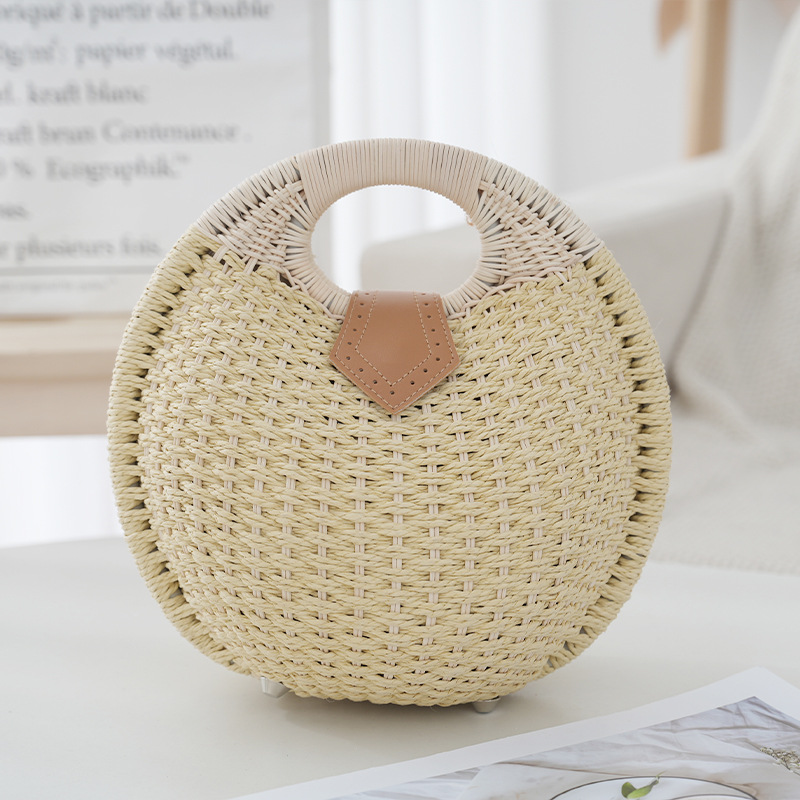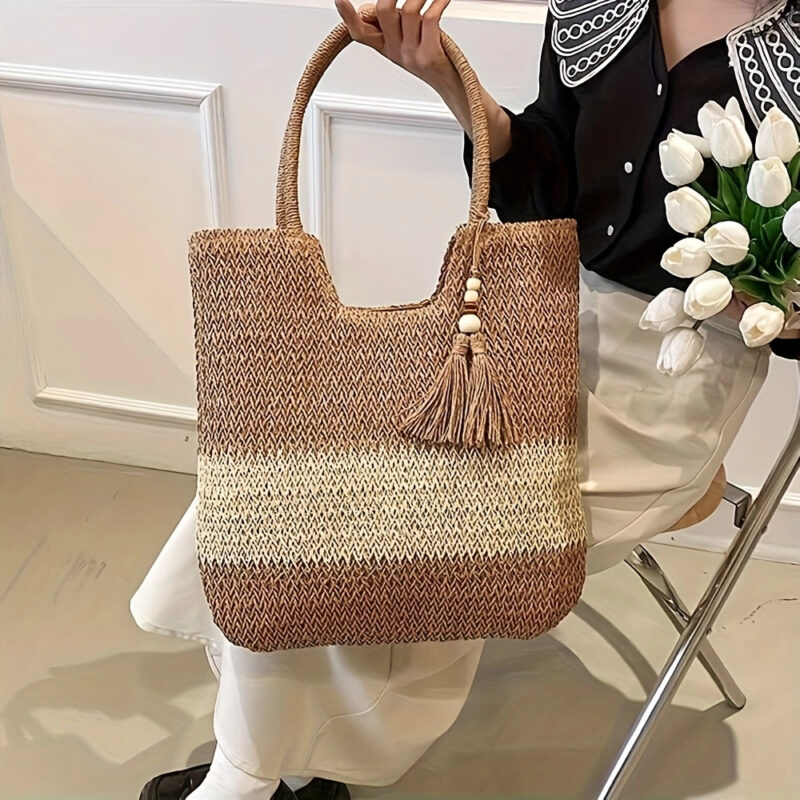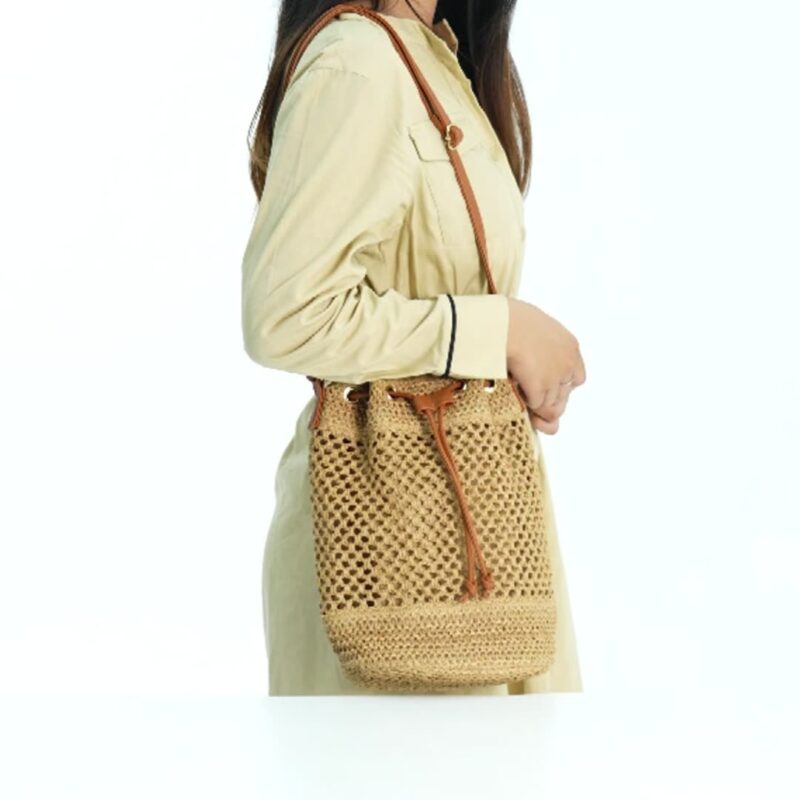Hand-woven bags have indeed seen a surge in popularity in recent years, gaining more and more fans.
This trend is driven by a combination of socio-cultural, consumer psychological, and fashion factors:
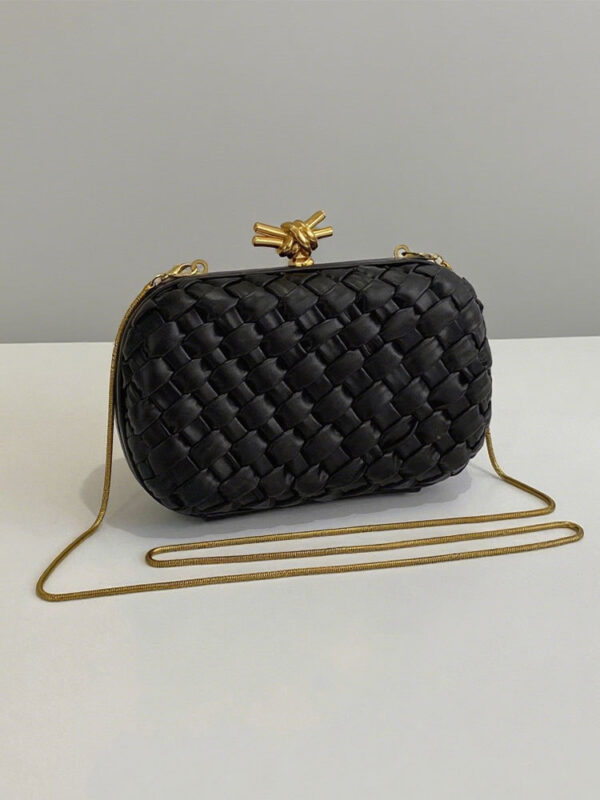
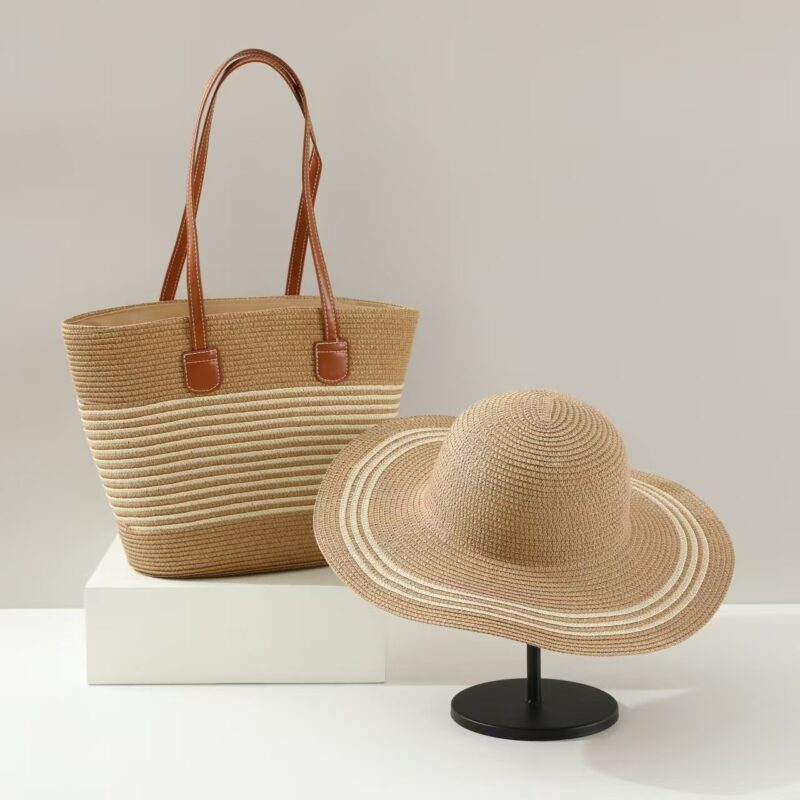
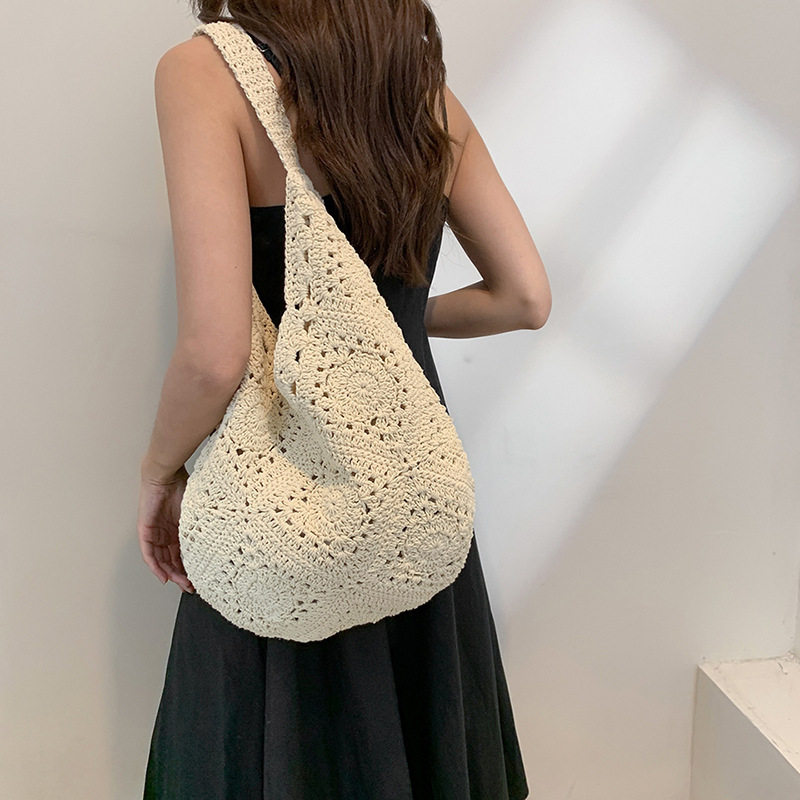
- The Pursuit of Uniqueness and Individuality:
- One-of-a-Kind: The handmade nature means each bag has subtle variations, making it difficult to find two completely identical ones. This satisfies the modern consumer’s desire to stand out and express their individuality.
- Customization Potential: Many hand-weavers offer customization, allowing consumers to choose colors, materials, size, and even patterns to create a bag uniquely their own.
- Embracing Slow Fashion and Sustainability:
- Countering Fast Fashion: Against the backdrop of increasing awareness of the environmental and social problems caused by fast fashion, consumers are turning towards more durable and meaningful products. Hand-woven bags often use natural materials (cotton, linen, straw, bamboo, paper cord, etc.), and their production focuses on craftsmanship over speed, embodying the “slow fashion” ethos.
- Eco-Consciousness: Natural materials are often biodegradable, and handmade production typically implies a smaller carbon footprint (small-scale, localized). Consumers prefer environmentally friendly options.
- Durability: Well-made hand-woven bags are usually structurally solid and made with quality materials, offering greater longevity than many cheap fast-fashion alternatives.
- Valuing Craftsmanship, Artistry, and Emotional Value:
- Revival of Handicrafts: In a highly industrialized era, people are rediscovering the value and warmth of handcrafted items. Hand-weaving embodies the weaver’s skill, time, and dedication. Consumers aren’t just buying a bag; they’re acquiring a piece imbued with “artisan spirit.”
- Storytelling and Emotional Connection: Handmade goods often carry a narrative. Consumers know who made it and under what circumstances, creating an emotional connection impossible with mass-produced items. Buying a hand-woven bag also means supporting independent artisans or small community economies.
- Cultural Heritage: Weaving is an ancient and widespread craft. Purchasing a hand-woven bag can signify appreciation and support for traditional culture or specific regional crafts.
- Influence of Fashion Trends:
- Popularity of Natural & Resort Styles: Ongoing fashion trends like Boho-chic, rustic, and resort styles emphasize natural elements, comfort, and relaxation. Hand-woven bags, with their inherent natural texture and handmade feel, perfectly complement these aesthetics, becoming a key accessory for spring/summer or vacations.
- Luxury Brand Influence: High-end fashion houses (like Bottega Veneta with its iconic weave) have elevated weaving techniques to luxury status, boosting the overall fashion credibility and acceptance of woven bags and spurring broader market interest.
- Celebrity Influence & Social Media: Celebrities and influencers frequently showcase stylish hand-woven bags in street style photos or on social media, significantly driving their popularity and visibility. Platforms like Instagram, Pinterest, and Xiaohongshu (Little Red Book) are also crucial for artisans and enthusiasts to display, discuss, and sell.
- Material Appeal and Sensory Experience:
- Natural Beauty: Natural materials like woven grass, rattan, cotton yarn, or paper cord possess unique textures, hues, and a rustic charm, offering a visually pleasing return to simplicity.
- Lightweight & Breathable: Compared to leather or synthetics, many woven bags (especially straw or rattan types) are lighter and more breathable, making them ideal for warmer weather.
- Pleasant Tactility: Natural materials often provide a warm, skin-friendly feel.
- Diverse Styles and Versatility:
- Hand-woven bags have moved far beyond the stereotypical “market basket” image. Designs are increasingly diverse, ranging from delicate mini clutches and elegant work totes to fashionable crossbody bags and practical beach bags or picnic baskets, suiting various styles and occasions.
- Designers and artisans continuously innovate on traditional weaving techniques, incorporating modern elements to make the bags more fashionable and versatile.
In summary, the core reasons for the popularity of hand-woven bags are:
They perfectly align with the key desires of contemporary consumers in an era of evolving consumption:
- The pursuit of personal expression and unique aesthetics,
- combined with a heightened focus on product quality, sustainability, emotional value, and cultural significance.
A hand-woven bag is more than just a functional item; it’s an embodiment of a lifestyle and set of values. It’s a fashion symbol that connects people to craftsmanship, nature, and a slower pace of life. This trend reflects a shift in consumer philosophy – moving from “owning more” to “owning better, more meaningful things.”
